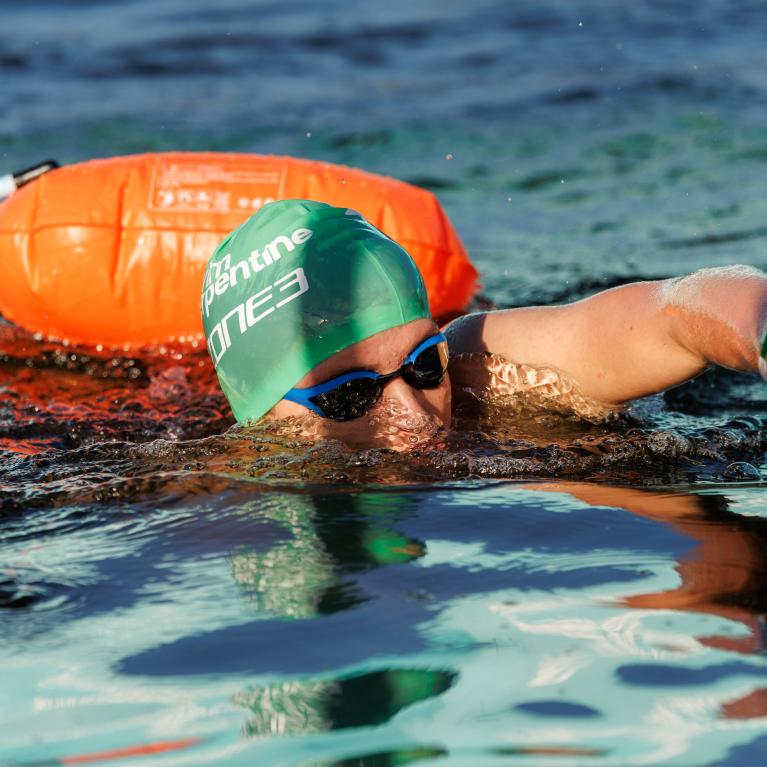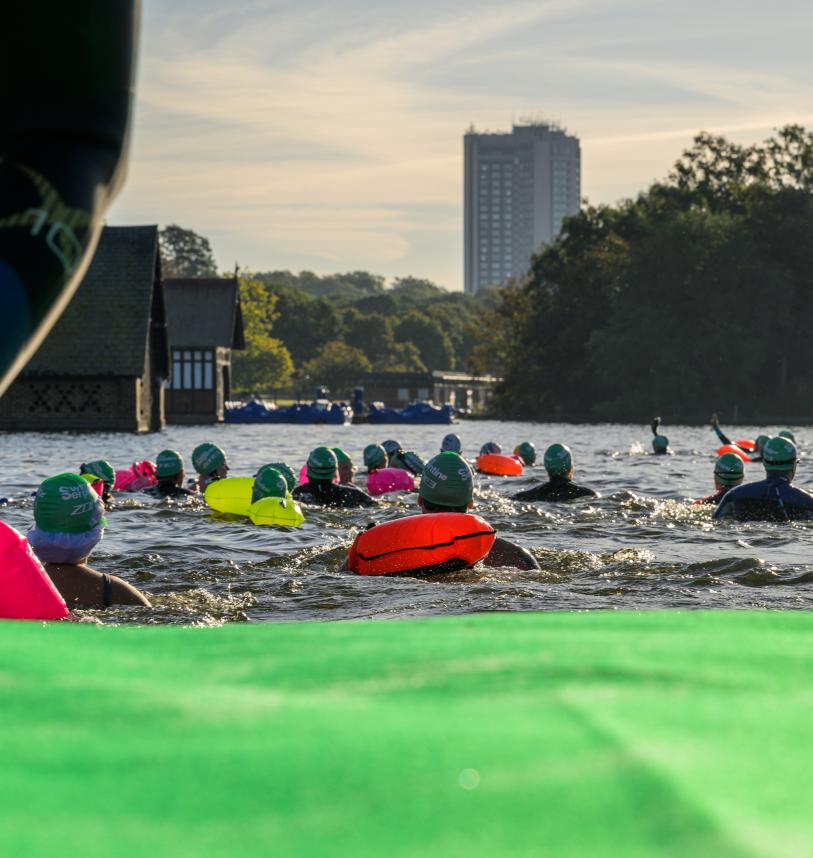
Wetsuit or tow float? Make the right choice for your open water swim.
According to Mel Berry, an endurance swimming coach and co-founder of wellness and health platform Her Spirit, the key is comfort and confidence:
“When you enter a swim event, it’s really important to enjoy the experience and be comfortable. Both tow floats and wetsuits will enable you to do that, as long as you practise, practise, practise with your chosen kit – or try both to see which you prefer – before your event.”
Here’s what you need to know about each option, so you can make the best choice.
Swimming with a tow float
A tow float is a bright inflatable device – often neon orange or pink – that floats behind a swimmer, attaching around the waist via a leash with a Velcro strap.
“A tow float shows people where you are,” says Mel. “So, if you want to be seen – by friends and family who are watching you or by the safety team – it will really help you and can give you a good boost of confidence for your swim.”
It’s important to note that it’s not a lifesaving aid, says Mel, but it is an inflatable device, so it can be used to have a little rest and catch your breath if you need to during the swim. “To do this, swimmers can either give their tow float a bear hug or lie on it like a pillow,” says Mel.
Though she notes, if you’re going to do that during an event, you’d ideally do it at a point where there weren’t lots of swimmers around you. And at the start of an event, especially if you’re a less confident swimmer, hang back and begin at the side rather than at the front of the pack, so other swimmers don’t get tangled in your leash.
Tow floats don’t really drag in the water unless it’s really windy, says Mel. If you’re swimming in windy conditions, it can be a smart idea to tuck your leash through your legs, after it’s gone around your waist, to make it shorter and tauter to reduce the drag.
She also warns swimmers to make sure their tow floats are inflated properly before their event, as they can deflate over time, and again that would cause drag in the water, slowing you down and making you work harder than you need to.
If you’re swimming one of the longer distances at Swim Serpentine, such as the two-mile or Super Six events, tow floats usually have storage pouches, allowing you to stash drinks, gels, sweets or other snacks to fuel you along the way, says Mel. Though she says taking on fuel is something you’ll definitely want to have tried during practice swims first.
If you’re using a tow float without a wetsuit, you’ll of course need to be aware of the water temperature in the days leading up to your swim and to have spent several weeks acclimatising to open water swimming in those temperatures, says Mel.
Order yours today

Swimming in a wetsuit
“A wetsuit will do two things,” says Mel. “It will keep you warmer, which is especially important if you haven't been exposed to colder water recently – at Swim Serpentine, for example, the water can sometimes be quite fresh. Wetsuits also make you more streamlined and help with buoyancy, which can give less competent swimmers a better body position, helping you go faster and use less energy.”
For many swimmers, especially those with less open water experience, wearing a wetsuit makes swimming events a lot more enjoyable, says Marianne Clark, an open water swim and triathlon coach at Ocean Set in Brighton. But they can also feel constricting, which can be stressful for some swimmers who aren’t used to wearing them, and wetsuits can cause chafing if they don’t fit correctly. “Another good reason to make sure you get used to your kit before your Swim Day,” she says.
Written by Sam Haddad. Sam is a freelance journalist based in Brighton, she's been writing about sport and the outdoors for over 20 years.
